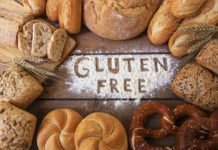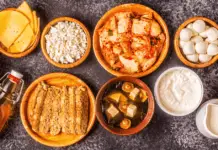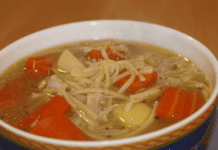Stella's Autoimmune Journey
It started with random symptoms over a 3-year period. Inflamed gums. An occasional blood blister inside the cheek. A stinging sensation in my throat. What felt like 1 or 2 scabs on the crown of my head. My dentist of all people connected the dots. A skin biopsy by my dermatologist confirmed his suspicions: pemphigus vulgaris, a rare, blistering autoimmune disease.
There’s no cure for pemphigus vulgaris only medication to prevent new blisters and lesions from forming. Many if not most of these medications produce unwanted side effects. Immunosuppressants are a mainstay of treatment. The thought of suppressing my immune system and the impact that would have on my overall health was scary enough. But I was also prone to suffering adverse reactions to prescribed medications. I avoided treatment like the plague, as if not treating my disease was an option. It wasn’t. My flares increased from once every few months to once a month to almost weekly. Life as I knew it was about to change.
Treatment Begins
I began taking oral steroids. Flares decreased but the side effects were disturbing. I couldn’t sleep. My stomach growled day and night. Constant anxiety became the norm. Eventually I began tapering the steroids with the help of a new medicine with even worse side effects. Suffice it to say, I had to discontinue this new medicine. I was still plagued by flares several times a month. I longed for a way to minimize disease activity using the least amount of medication, but that didn’t seem like a possibility. Some days there appeared to be a pattern with my flares. Other days there was no rhyme or reason. But I was desperate. I was a single parent with 3 young children and no support system. I couldn’t afford to let my disease or side effects from my medication get the best of me. There was too much at stake. I had to try something. Each time my disease flared I began making a note of what I had eaten over the past 24 hours. Within a few weeks I was certain that I couldn’t tolerate gluten or dairy. That list would grow exponentially over time.
The Turning Point
My doctor wasn’t convinced. He was ready to pull out what I considered to be the “big guns”, infusion therapy with a drug used to treat cancer and rheumatoid arthritis. This treatment promised the possibility of remission, but results varied wildly. When I weighed what I knew about the treatment against my own personal circumstances this medication just didn’t seem like a good fit. In spite of my own uncertainty I convinced my doctor to give me a little time to try things my way. There was no one affirm whether I was on the right path, no one to encourage me to forge ahead…only material from the internet and library which I devoured almost obsessively. I’d take one step forward and two steps backwards. Just when I thought I had my flares all figured out, another seemingly random flare would occur. I felt so lost and confused. Am I doing the right thing? I resigned myself to begin my doctor’s suggested treatment plan the moment my flares worsened. They never did. But now I had a new problem. What was I supposed to eat? Between avoiding foods I was allergic to and foods that triggered my autoimmune disease flares there was little left to eat. Diets like the autoimmune protocol and the paleo diets couldn’t accomodate all of my restrictions. My weight began to drop below my comfort level…10…15…20 pounds…gone. The jittery, “hangry” feeling I’d always gotten when I waited too long to eat worsened. There was only one thing left to do. See a nutritionist. Not only did the nutritionist make recommendations about foods I should eat more of, but to my surprise she made a connection between many of the foods I couldn’t eat. They were all high in FODMAPs (fermentable oligosaccharides, disaccharides, monosaccharides and polyols). To my knowledge, no clinical association between FODMAPs and pemphigus vulgaris exists. But for whatever reason they affect me so I began avoiding foods high in FODMAPS like fruits, sweet potatoes, pumpkins, honey, onions and garlic. My nutritionist also taught me about food thresholds which explained why some foods only caused me to flare when I ate them in large portions.
From "Crisis Mode" to "Maintenance Mode"
I began incorporating positive changes in my diet and overall lifestyle. Eating more vegetables, especially green leafy ones. Working to stabilize my blood sugar. Managing stress. Getting more sleep and rest (I admit I still struggle in these 2 areas, but I’m still leaps and bounds better than I had been). I read books on managing autoimmune disease that affirmed I was on the right path and taught me the importance of reducing my toxic load, switching to an organic diet and adding supplements.
Soon my flares began occurring less frequently, even when my steroids were tapered to a considerably low dose. On the rare occasion when I would have a flare it was much milder than before. I learned how to recognize early warning signs of a flare and how to prevent them from progressing. In the process, other unrelated health issues began to resolve, some that have plagued me for as long as I could remember: eczema, chronic itchy skin (unrelated to the eczema), acid reflux and IBS-C (irrititable bowel syndrome with constipation).
Today I’m still guarded with what I eat. But that doesn’t stop me from enjoying meals both in and outside my home.
Recommended Books
My autoimmune disease taught me how to become an avid reader. Click here for my recommendations of books that had the biggest impact on reducing my flare-ups.




















